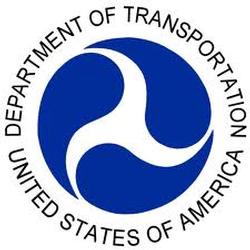
BTS releases May 2015 North American freight numbers
The value of U.S.-NAFTA freight totaled $92.7 billion in May 2015 as all modes carried less U.S.-NAFTA freight than in May 2014, according to the TransBorder Freight Data released today by the U.S. Department of Transportation’s Bureau of Transportation Statistics (BTS). Year-over-year, the value of U.S.-NAFTA freight flows by all modes decreased by 10.8 percent. Large decreases in the value of NAFTA trade by pipeline and vessel in May were due to the reduced unit price of mineral fuel shipments. A recession in Canada likely contributed to the double digit decrease of U.S.-NAFTA freight flows.
Freight by mode
In May 2015 compared to May 2014, the value of commodities moving by rail decreased by 7.4 percent, truck by 5.9 percent and air by 2.4 percent. Vessel freight values decreased by 22.4 percent and pipeline freight decreased by 45.4 percent mainly due to the lower unit price of mineral fuel shipments.
Trucks carried 63.2 percent of U.S.-NAFTA freight and are the most heavily utilized mode for moving goods to and from both U.S.-NAFTA partners. Trucks accounted for $28.8 billion of the $48.3 billion of imports (59.7 percent) and $29.7 billion of the $44.4 billion of exports (67.0 percent).
Rail remained the second largest mode by value, moving 15.8 percent of all U.S.-NAFTA freight, followed by vessel, 7.6 percent; pipeline, 4.8 percent; and air, 3.7 percent. The surface transportation modes of truck, rail and pipeline carried 83.8 percent of the total U.S.-NAFTA freight flows.
U.S.-Canada freight
The value of U.S.-Canada freight totaled $48.9 billion in May 2015, down 15.2 percent from May 2014, as all modes of transportation carried a lower value of U.S.-Canada freight than a year earlier. The Bank of Canada reported this month that Canada is in a recession after two consecutive quarters of negative growth in real Gross Domestic Product. Lower mineral fuel prices contributed to a year-over-year decrease in the value of rail freight, down 12.9 percent.
Mineral fuels are a large share of freight carried by vessel, which was down 9.4 percent year-over-year, and pipeline, down 46.5 percent. The tonnage of mineral fuels imported by vessel increased 15.8 percent, somewhat offsetting the large price decline of the commodity.
Trucks carried 57.3 percent of the $48.9 billion of freight to and from Canada, followed by rail, 16.9 percent; pipeline, 8.5 percent; vessel, 6.0 percent; and air, 4.4 percent. The surface transportation modes of truck, rail and pipeline carried 82.7 percent of the total U.S.-Canada freight flows.
U.S.-Mexico freight
The value of U.S.-Mexico freight totaled $43.8 billion in May 2015, down 5.3 percent from May 2014, as two out of five transportation modes – air and rail – carried more U.S.-Mexico freight than in May 2014. Year-over-year, the value of U.S.-Mexico air freight rose 2.7 percent, the largest percentage increase of any mode. Freight carried by rail increased by 0.8 percent. Truck freight decreased by 1.9 percent. Pipeline freight decreased by 25.2 percent and vessel freight decreased by 29.7 percent, mainly due to lower mineral fuel prices.
Trucks carried 69.8 percent of the $43.8 billion of freight to and from Mexico, followed by rail, 14.7 percent; vessel, 9.4 percent; air, 3.0 percent; and pipeline, 0.7 percent. The surface transportation modes of truck, rail and pipeline carried 85.2 percent of the total U.S.-Mexico freight flows.
See BTS Transborder Data Release for summary tables and additional data. See North American Transborder Freight Data on the BTS website for additional data for surface modes since 1995 and all modes since 2004.









